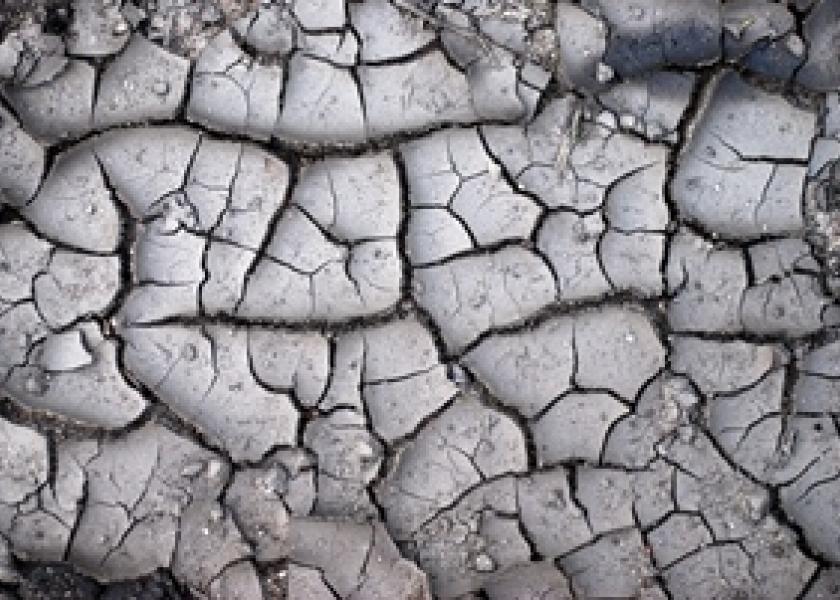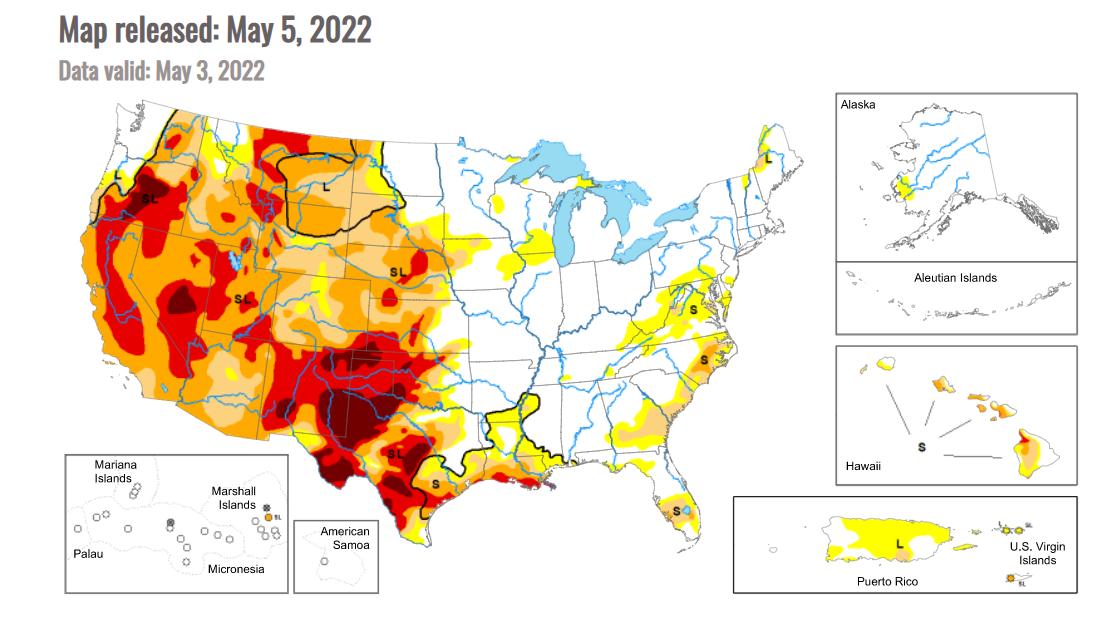Winter wheat drought footprint unchanged

Based on this week’s U.S. Drought Monitor (as of May 3), USDA says 69% of the winter wheat crop is saddled with drought, unchanged from the previous week. USDA rates the drought as 17% “moderate,” 30% “severe,” 19% “extreme” and 3% “exceptional.”
Across HRW areas, dryness/drought covers 91% of Texas (down three points from the previous week), 77% of Oklahoma (unchanged), 100% of Colorado (unchanged), 75% of Kansas (down four points), 98% of Nebraska (down one point), 82% of South Dakota (down four points) and 93% of Montana (up two points).
The Drought Monitor commentary noted: “In areas of Texas (Panhandle, north-central, west-central, Trans-Pecos), isolated bands of heavy rainfall (2 to 4 inches) helped to improve drought-affected areas. Conversely, the combination of above-normal temperatures, dry soils, and increased evaporative demand led to degradation in areas of the Panhandle, southeastern Texas, and the Trans-Pecos. In the Panhandle of Oklahoma, small areas of Exceptional Drought (D4) expanded in response to short-term rainfall deficits. For the week, average temperatures were mostly above normal (2 to 8+ deg F) with the greatest positive anomalies observed across Texas and western Oklahoma. Widespread improvements were made in South Dakota, Nebraska, and Kansas in response to significant rainfall accumulations that helped to improve soil moisture levels and boosted streamflow levels. Rainfall totals for the week ranged from 2 to 8+ inches with the highest totals observed in central South Dakota, eastern and central Nebraska, and northern Kansas. However, some drought-stricken areas of the region, including extreme southeastern South Dakota, northeastern Nebraska, and central Kansas, largely missed out on this week’s storms. In the eastern plains of Montana, improving conditions (precipitation, soil moisture) led to reduction in areas of Severe Drought (D2) and Extreme Drought (D3). However, it should be noted that recent improvements in eastern Montana are not uniform and many areas are still coping with the impacts (agricultural) of the longer-term drought situation. Average temperatures were below normal across the northern half of the region, with negative departures ranging from 2 to 10+ deg F below normal and the greatest departures observed in eastern portions of the Dakotas. In the southern half of the region, average temperatures were 2 to 8 deg F above normal.”
For other crop areas, USDA puts the drought footprint at 23% for corn, 14% for soybeans, 35% for spring wheat and 56% for cotton.








